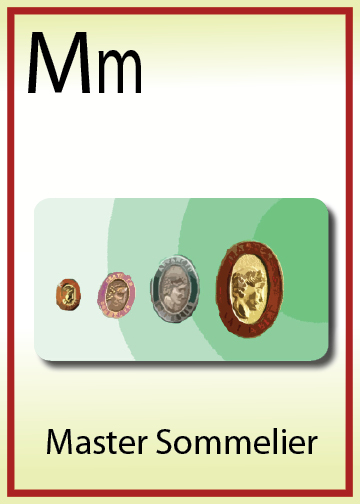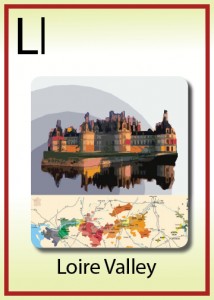Now I know my Wine-Phabet: M is for Master Sommelier
In this new series called “Now I know my Wine-phabet”, I will explore letter by letter wine and what I believe are some of the most important and/or influential aspects in the world of wine. Since I am only choosing one topic per letter, many will be missed. Hopefully these posts come across as being whimsical and informative.
Mythical, Magical and Masterly are the best adjectives that I can think to describe that über-human being, The Master Sommelier. The Master Sommelier is so rare that even Nessie, the Loch Ness monster has been sighted more times. They are elusive and can only be found in cellars deep in the dungeons of the colossal hotels of Las Vegas. Funny to think that my hometown, San Diego, the back woods of the wine world is home to the 1st American Master Sommelier, Eddie Osterland.
Is a master sommelier a member of the free masons?
The master sommelier has a mythical nose which can pick out 25 aromas in 2.25 minutes. Their magical palates can discern a wines vintage, variety, appellation and age in 2 minutes flat. Their minds are an encyclopedia mastering the world’s wine laws, vintages, and grape varieties and their farming techniques. But how does one become a master sommelier? Do you have to be born into this exclusive society? Is a master sommelier a member of the free masons? I am just a sommelier, not a MASTER SOMMELIER, and I always get asked the question where did I go to school? And my answer is always so simple, San Francisco State.
Let’s break down the mysticism. Here are the nuts and bolts of how to become a master sommelier.
- You gotta love wine! So much so that you live and breathe wine. You have to drink wine daily and be completely satisfied spitting it out. It has to be an obsession.
- Most master sommeliers come from within the restaurant business. The restaurant is the training ground. There they are exposed to wines from around the globe. The day in and day out of talking, studying and drinking wine puts them on the road to become a sommelier.
- Now that you have the basics, you will attend an intensive 2 day course where you will review the different wine regions of the world. This is a course through the Court of Master Sommeliers and it is called the Introductory Level 1 Sommelier course. Don’t expect to take this course and think you will pass the exam without knowing the information already. The course is merely a review of what you should already know. You must pass the multiple choice exam which covers questions about the entire world of wine.
- Once you have passed level one, the next step is Level 2: the Certified Sommelier Course. Here you will attend an all day 3 part exam in which you must taste 2 wines blind. You must accurately describe the wine’s aromas and flavors and ascertain the wine’s grape variety, climate, country, appellation and vintage. This is followed by a multiple choice exam covering wine from around the world (mostly old world, there might two or three California questions). Finally, you will be asked to serve a master sommelier and show your expertise on wine pairings, decanting, champagne service and table side manners. Pass this and you have become a sommelier.
- The next step to becoming a Master is applying for the Advanced Sommelier Certification. This exam is significantly more complicated. It follows the same format as the certified exam, but on steroids. You are responsible to blind taste 6 wines in under 25 minutes. To make it even more difficult, you have to do this portion orally while master sommeliers scrutinize your every word. The theory exam is much more detailed. The service portion is not a simple song and dance, but you are put on the hot seat. Questions testing your mastery of food and wine pairings, spirits, cocktails, dessert wines, cognac, wine producers, vintages will be asked of you. Your answers need to be second nature.
- Almost there. Now you must be asked to sit for the final exam, the Master Sommelier Diploma Exam. The exam follows the advanced format, however the theory exam is not written but oral. The service exam might consist of being handed an Austrian wine list and you asked to proofread it. Blind tasting has very little room for error. The candidate will have three years to pass all three parts of this exam. Once you pass all three exams within the three years with a score of 75% or higher, you will have joined the ranks of 197 other master sommeliers world wide.
Have I got your interest in becoming a master sommelier? Then you won’t want to miss the upcoming documentary SOMM.











2 Comments
The Wine-Phabet: N is for Nebbiolo
[…] Post navigation ← Previous […]
The Bordeaux Dialogues with Eddie Osterland | Maurice's Wine Cru
[…] am excited to present a special event with a friend, Eddie Osterland, America’s first master sommelier. For 25 years he has hosted workshops and has been an inspiration to the sommelier community […]